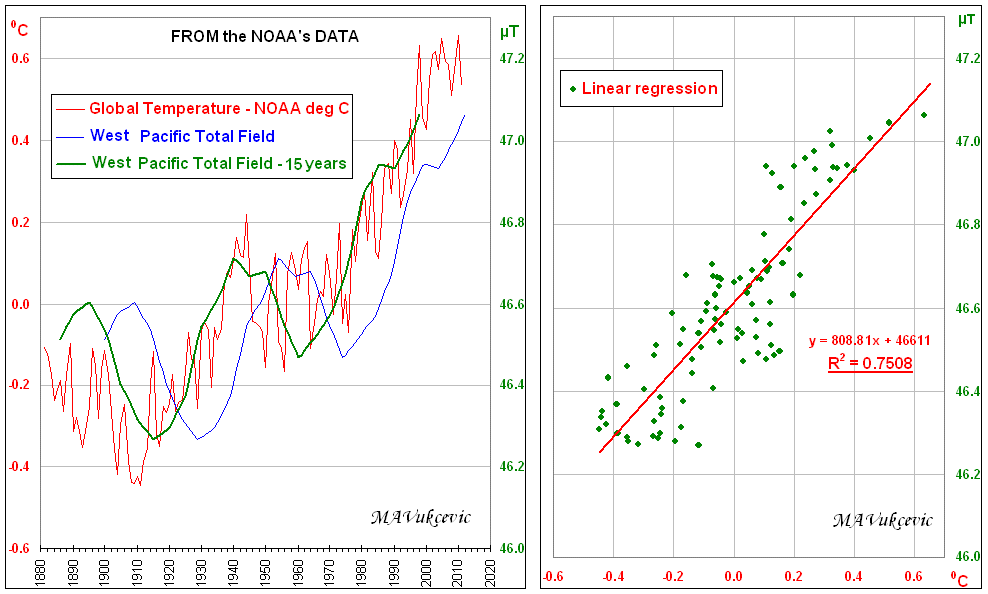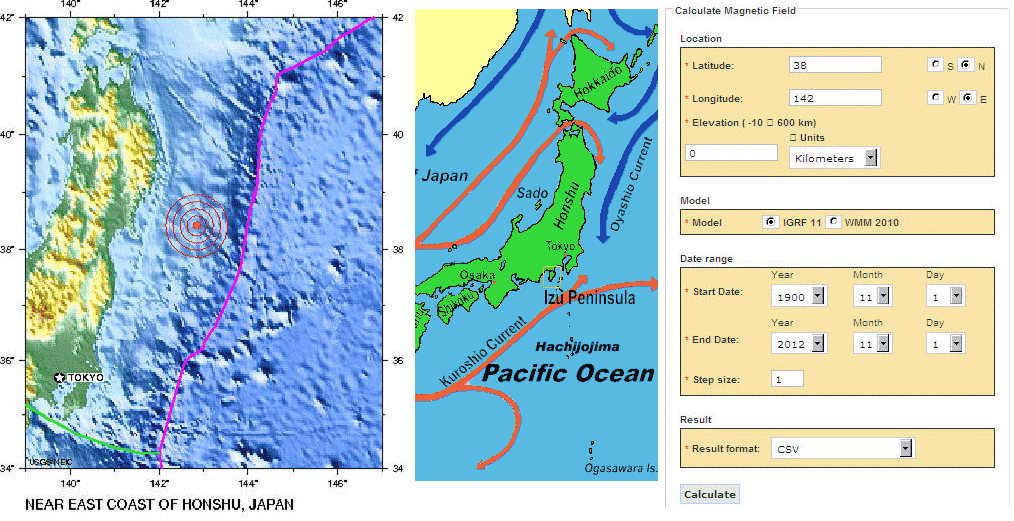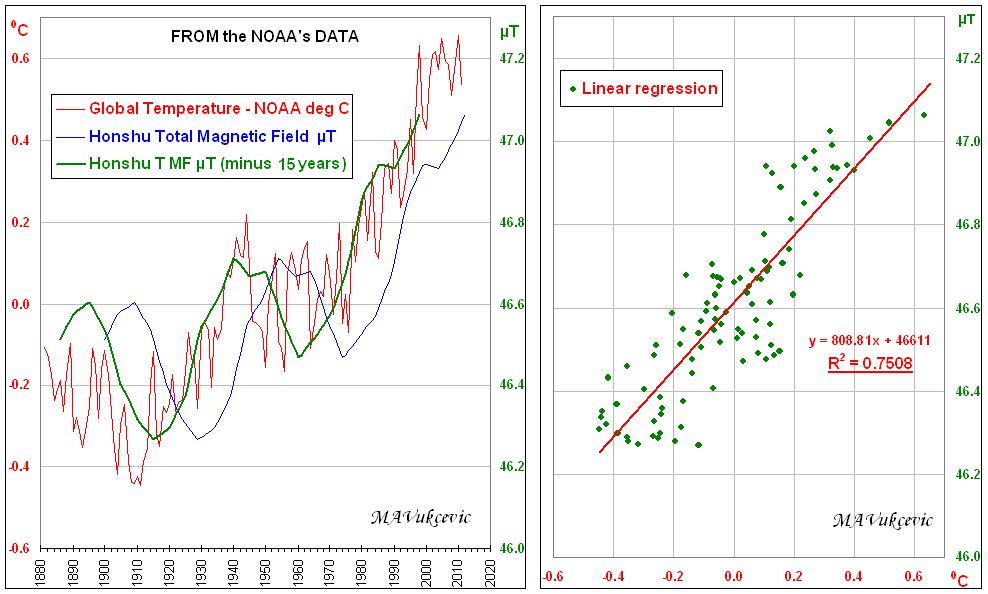Climate Change: Do scientists at the NOAA know ?
NORTH WEST PACIFIC the AND GLOBAL TEMPERATURE CHANGES
Research inspired by the Svalgaard of Stanford visit to Japan
direction of action from the tectonic plates movement events to the NOAA data
TECTONIC PLATES > Earthquakes > Kuroshio (warm) - Oyashio (cold) balance alters > SST & GT change (data)
NOAA: The two currents COLLIDE near eastern shores of Japan forming the North Pacific Current.
TECTONIC PLATES > Magma > Earth's Core > Geo-Magnetic Field Dynamo (data)




